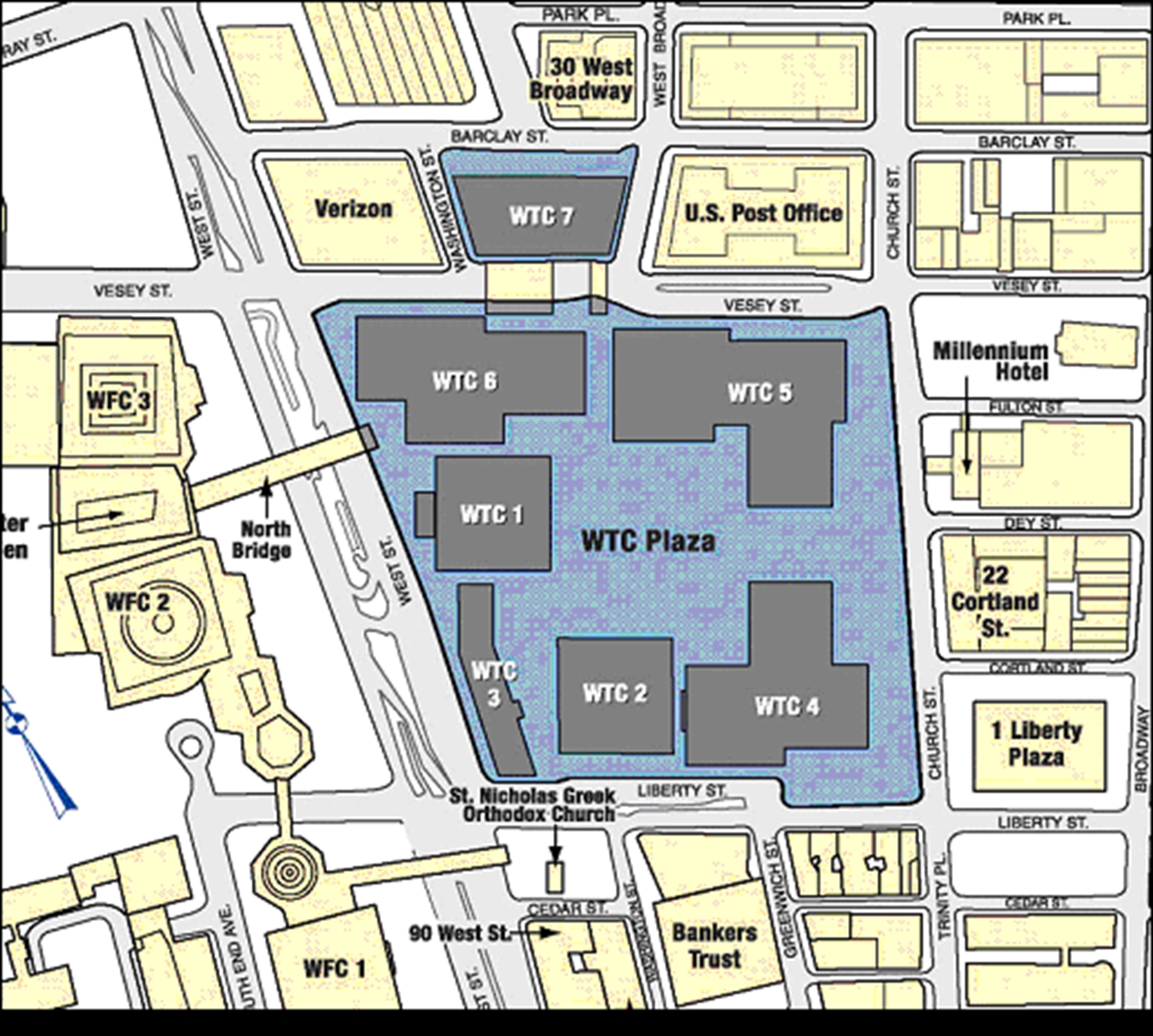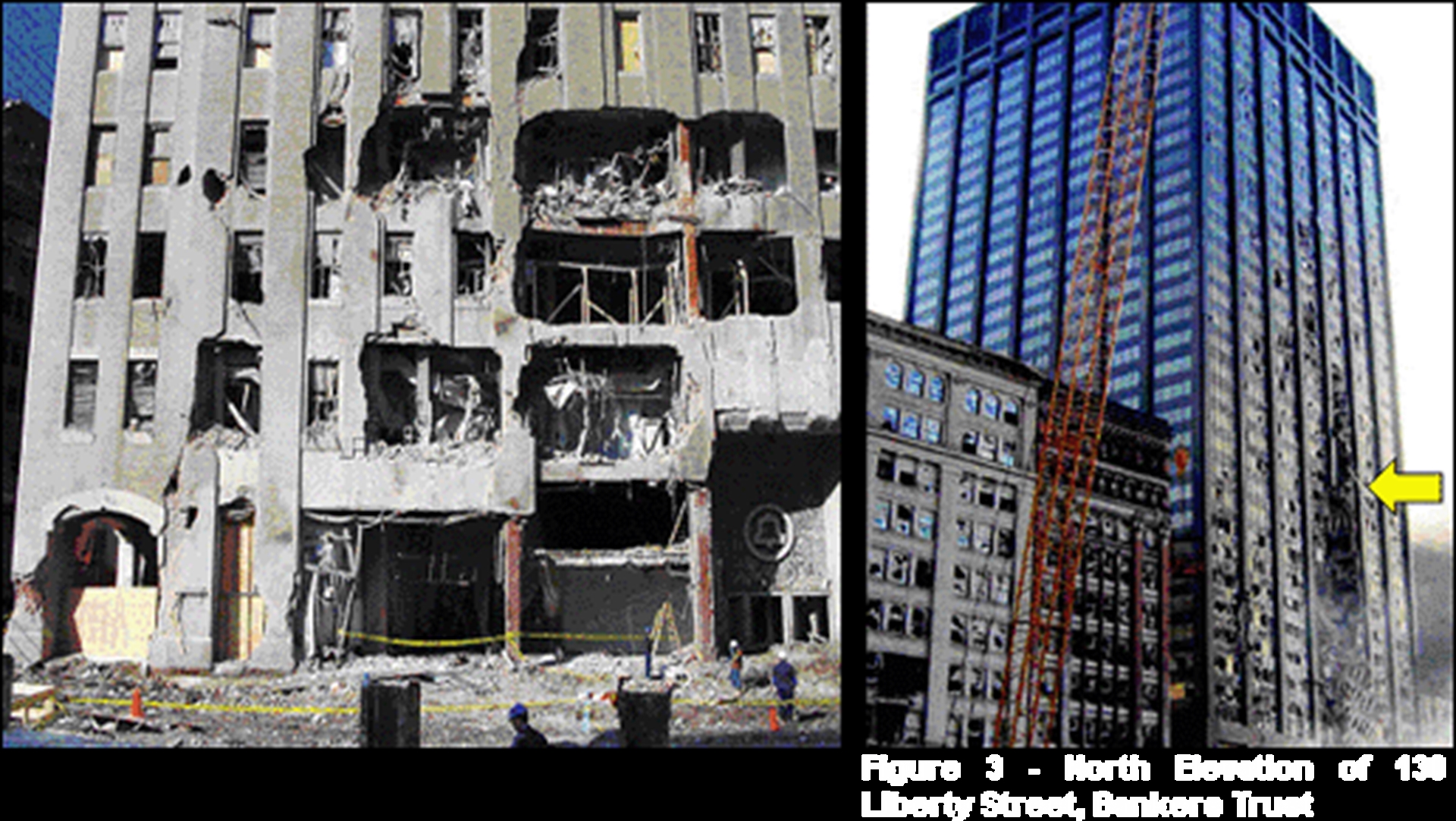Public Safety Issues and the World Trade Center Disaster
Words: David Biggs
In November 2003, The Masonry Society of Boulder, Colorado, released a publication, ?Masonry Aspects of the World Trade Center Disaster,? that supplements the ASCE-FEMA report on the disaster and takes an in-depth look at the performance of the surrounding buildings with masonry construction. Both publications highlight aspects of the performance of the buildings to the disaster that should be addressed for the benefit of public safety.
World Trade Center Plaza
None of the seven steel-framed plaza buildings (WTC 1 through WTC 7 on Figure 1) survived the disaster. The collapse of the south tower (WTC 2) also crushed St. Nicholas Greek Orthodox Church, a small masonry structure at the southwest corner of the site. The surrounding buildings suffered damage from the falling debris, plane wreckage, and fires caused by the collapse of the north (WTC 1) and south towers and WTC 7. Those not fully impacted were still affected by wind-borne debris and the air concussion created by the collapses.

Figure 1: World Trade Center Plaza and Surrounding Buildings
The masonry lessons learned that are related to public safety can be summarized as:
- Framed buildings with exterior masonry walls generally performed better than the newer buildings with lightweight curtain wall construction. While it is not possible to compare the various buildings equally because each was impacted differently, in general, the masonry elements of buildings that were impacted absorbed the impact energy and limited the damage. Two examples of damage are shown in Figures 2 and 3.
Figure 2 shows the east wall of 140 West Street that faces WTC 7. A multi-story area of the exterior wall was damaged by the collapse of WTC 7, yet the damage remained confined to the area of impact. In contrast, Figure 3 shows the steel-framed Bankers Trust building. A column tree from the south tower sliced through the curtain wall system and structure from the fifteenth floor down to the eighth floor.
- Masonry infill for walls and beams functioned as fireproofing and provided significant structural redundancy. The infill provided an alternate load path to transfer gravity loads from damaged steel columns and prevented collapse of portions of several buildings. Figure 2 is also an example of this.

Figure 2: East Elevation go 140 West Street Figure 3: North Elevation of 130 Liberty Street, Bankers Trust
- The performance of masonry veneers and panelized masonry systems was dependent upon the type of veneer and the anchorage system used. Damaged areas were repaired. Figure 4 shows where damaged wall panels with granite facing were removed and later rebuilt.
- Interior masonry partition walls acted as shear walls for added lateral strength and added fire protection in the older buildings.
- The masonry flat arches in the floors of 90 West Street performed better under fire than the newer steel-framed plaza buildings that could be examined. Figure 5 shows a section of floor in 90 West Street adjacent to an impact area. It was built to 1906 standards and remains intact after the fire. Figure 6 shows a section of distorted steel framing in plaza building WTC 5 building; it was designed and fireproofed using 1970 standards. While both areas experienced a full fire burn, the 1906 construction performed better.

Figure 4: Southwest corner of World Financial Center Figure 5: Flat arch tile floors in 90 west street Figure 6: Floor Framing in WTC 5 World Trade Center Plaza
For the towers themselves, the egress enclosures were fire-rated using gypsum wallboard products. Studies by NIST indicate most on the levels of impact were destroyed in the attacks; only 18 people from above the floors of impact escaped. More durable wall systems might have been able to better resist the blast of the jet fuel explosions, and there might have been more survivors; we don?t know. Reinforced masonry and concrete can provide protection and are being used in the rebuild of WTC 7.
For public safety, architects and engineers need to evaluate structural strength, fireproofing, protection of wall systems, and egress. Masonry has proven to have the ability to provide the performance to meet the public need.